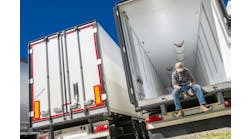Are you aware that there are greater static electricity ignition hazards associated with use of ultra low sulfur diesel (ULSD) than earlier diesel formulations with higher sulfur content?
USLD has an increased ability to store a static charge that could discharge and lead to a fire or explosion, warns the Association of Equipment Manufacturers (AEM), a trade group providing business development resources to advance the off-road equipment manufacturing industry.
In its best practices guidance bulletin, ULSD. Not Your Same Old Diesel Fuel Anymore, AEM explains that the removal of sulfur and other compounds in ULSD fuel decreases its conductivity and increases its ability to store static charge.
While it may not be noticeable to most users, there may be a greater risk of static electricity ignition if their refueling systems are not properly functioning or maintained, AEM points out.
“The removal of sulfur and other compounds in ultra low sulfur diesel fuel decreases its conductivity and increases its ability to store static charge,” states the bulletin. “Refineries may have treated the fuel with a static dissipating additive. However, there are many factors that can reduce the effectiveness of the additive over time.
“Static charges can build up in ULSD fuel while it is flowing through fuel delivery systems. Static electricity discharge when combustible vapors are present could result in a fire or explosion.”
Therefore, AEM says, it is important to ensure that the entire system used for refueling (fuel supply tank, transfer pump, transfer hose, nozzle, and others) is properly grounded and bonded.
A properly grounded fuel delivery system has an electrically conductive connection from the fuel delivery system tank to earth ground to allow static and electrical charge dissipation.
Consult with your fuel or fuel system supplier to ensure the delivery system is in compliance with fueling standards for proper grounding and bonding practices, urges AEM.




